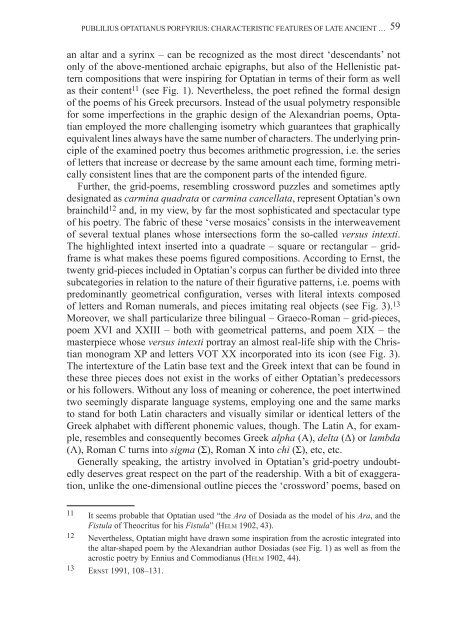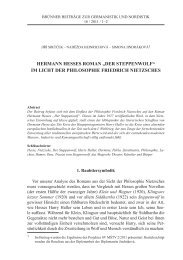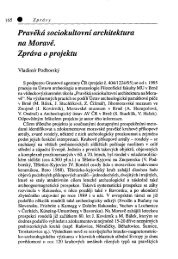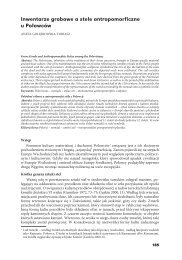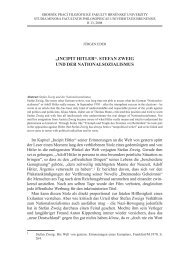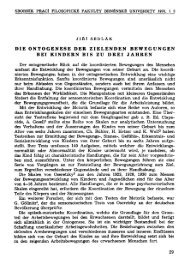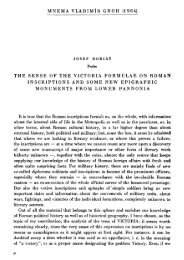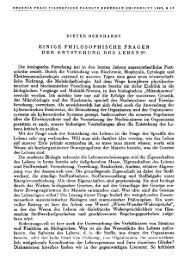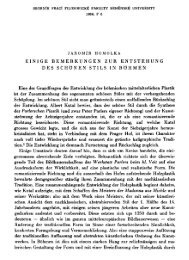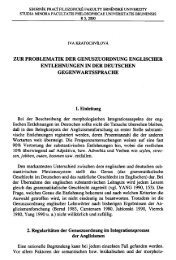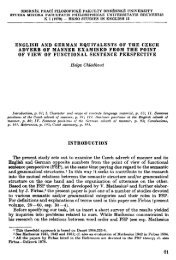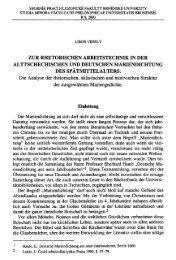publilius optatianus porfyrius: characteristic features of late ancient ...
publilius optatianus porfyrius: characteristic features of late ancient ...
publilius optatianus porfyrius: characteristic features of late ancient ...
Create successful ePaper yourself
Turn your PDF publications into a flip-book with our unique Google optimized e-Paper software.
59Publilius OPTATIANUS Porfyrius: Characteristic Features <strong>of</strong> Late Ancient …an altar and a syrinx – can be recognized as the most direct ‘descendants’ notonly <strong>of</strong> the above-mentioned archaic epigraphs, but also <strong>of</strong> the Hellenistic patterncompositions that were inspiring for Optatian in terms <strong>of</strong> their form as wellas their content 11 (see Fig. 1). Nevertheless, the poet refined the formal design<strong>of</strong> the poems <strong>of</strong> his Greek precursors. Instead <strong>of</strong> the usual polymetry responsiblefor some imperfections in the graphic design <strong>of</strong> the Alexandrian poems, Optatianemployed the more challenging isometry which guarantees that graphicallyequivalent lines always have the same number <strong>of</strong> characters. The underlying principle<strong>of</strong> the examined poetry thus becomes arithmetic progression, i.e. the series<strong>of</strong> letters that increase or decrease by the same amount each time, forming metricallyconsistent lines that are the component parts <strong>of</strong> the intended figure.Further, the grid-poems, resembling crossword puzzles and sometimes aptlydesignated as carmina quadrata or carmina cancellata, represent Optatian’s ownbrainchild 12 and, in my view, by far the most sophisticated and spectacular type<strong>of</strong> his poetry. The fabric <strong>of</strong> these ‘verse mosaics’ consists in the interweavement<strong>of</strong> several textual planes whose intersections form the so-called versus intexti.The highlighted intext inserted into a quadrate – square or rectangular – gridframeis what makes these poems figured compositions. According to Ernst, thetwenty grid-pieces included in Optatian’s corpus can further be divided into threesubcategories in relation to the nature <strong>of</strong> their figurative patterns, i.e. poems withpredominantly geometrical configuration, verses with literal intexts composed<strong>of</strong> letters and Roman numerals, and pieces imitating real objects (see Fig. 3). 13Moreover, we shall particularize three bilingual – Graeco-Roman – grid-pieces,poem XVI and XXIII – both with geometrical patterns, and poem XIX – themasterpiece whose versus intexti portray an almost real-life ship with the Christianmonogram XP and letters VOT XX incorporated into its icon (see Fig. 3).The intertexture <strong>of</strong> the Latin base text and the Greek intext that can be found inthese three pieces does not exist in the works <strong>of</strong> either Optatian’s predecessorsor his followers. Without any loss <strong>of</strong> meaning or coherence, the poet intertwinedtwo seemingly disparate language systems, employing one and the same marksto stand for both Latin characters and visually similar or identical letters <strong>of</strong> theGreek alphabet with different phonemic values, though. The Latin A, for example,resembles and consequently becomes Greek alpha (A), delta (Δ) or lambda(Λ), Roman C turns into sigma (Σ), Roman X into chi (Σ), etc, etc.Generally speaking, the artistry involved in Optatian’s grid-poetry undoubtedlydeserves great respect on the part <strong>of</strong> the readership. With a bit <strong>of</strong> exaggeration,unlike the one-dimensional outline pieces the ‘crossword’ poems, based on11 It seems probable that Optatian used “the Ara <strong>of</strong> Dosiada as the model <strong>of</strong> his Ara, and theFistula <strong>of</strong> Theocritus for his Fistula” (He l m 1902, 43).12 Nevertheless, Optatian might have drawn some inspiration from the acrostic integrated intothe altar-shaped poem by the Alexandrian author Dosiadas (see Fig. 1) as well as from theacrostic poetry by Ennius and Commodianus (He l m 1902, 44).13 Er n s t 1991, 108–131.


